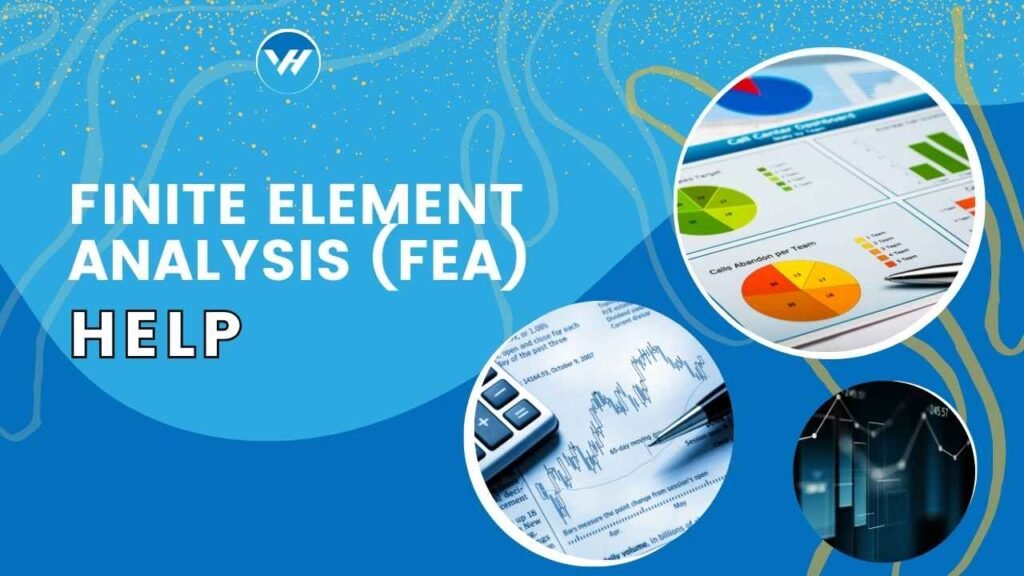Finite Element Analysis (FEA) is a powerful computational tool used to simulate and analyze the behavior of structures and mechanical components under various conditions. Think of FEA as a way to predict how a physical object will respond to forces, vibrations, heat, and other factors by breaking it down into smaller, manageable pieces or “elements.” Each of these elements is analyzed for stresses and deformations, allowing engineers and scientists to understand the overall behavior of the entire structure.

FEA is crucial in many fields including engineering, automotive, aerospace, and civil construction. It helps in optimizing designs, predicting potential failures, and ensuring that products meet safety standards. By simulating real-world conditions, FEA saves time and money by identifying issues before physical prototypes are made or final products are manufactured.
Table of Contents
ToggleThe Basics of Finite Element Analysis
Key Concepts and Terminology
Before diving into FEA, it’s important to grasp some fundamental concepts:
- Nodes: Points at the corners of elements where calculations are performed.
- Elements: Small, discrete units into which the entire structure is divided.
- Mesh: The collection of elements and nodes that form the model of the structure.
How Does FEA Work?
FEA involves several key processes:
Discretization
This is the process of dividing a complex structure into smaller, simpler elements. Imagine breaking down a large, intricate puzzle into smaller pieces that are easier to manage and solve.
Mesh Generation
Creating a mesh involves defining the shape and density of elements. A finer mesh (with more elements) typically provides more accurate results but requires more computational resources. Conversely, a coarser mesh is less detailed but faster to analyze.
Boundary Conditions
These are constraints applied to the model to simulate real-world conditions. For example, fixed supports, applied loads, or temperature effects can be specified to replicate the actual environment in which the structure operates.
Getting Started with FEA
Choosing the Right FEA Software
There are various FEA software options available, each with its own strengths and specializations. Some popular choices include ANSYS, Abaqus, and COMSOL Multiphysics. When selecting software, consider factors like ease of use, support, and compatibility with other tools.
Basic Steps in Performing FEA
- Problem Definition: Clearly define the problem you want to solve, including objectives, constraints, and desired outcomes.
- Model Creation: Develop a digital model of the structure or component, including the mesh and boundary conditions.
- Solution and Analysis: Run the simulation, analyze the results, and interpret the findings to make informed decisions or improvements.
Common Challenges in FEA
Convergence Issues
One common challenge is ensuring that the solution converges. Convergence means that as the mesh is refined, the results should approach a stable solution. If not, it might indicate issues with the model or the need for a more refined mesh.
Mesh Quality and Its Impact
The quality of the mesh can significantly affect the accuracy of results. Poorly shaped or inconsistent elements can lead to erroneous outcomes. It’s essential to create a well-distributed and appropriately sized mesh to ensure reliable results.
Interpretation of Results
Understanding FEA results requires careful interpretation. Sometimes, the data may show unexpected results, which can be due to modeling errors or incorrect boundary conditions. A thorough review and validation against theoretical or experimental data are crucial.
Advanced Topics in FEA
Nonlinear Analysis
Nonlinear analysis is used when the behavior of the material or structure changes with applied loads, such as in large deformations or complex material properties. It provides a more accurate representation of real-world conditions.
Dynamic Analysis
This type of analysis assesses how structures respond to time-dependent loads, such as vibrations or impacts. Dynamic FEA is essential for applications involving fluctuating forces or rapid changes.
Coupled Field Problems
Coupled field problems involve interactions between different physical phenomena, like thermal and mechanical effects. For example, analyzing how heat affects the structural integrity of a component requires coupling thermal and structural analyses.
How Virtual Help Can Assist with FEA
Overview of Virtual Help
Virtual Help is a convenient online platform that offers tutoring and assignment help for various subjects, including Finite Element Analysis (FEA). Through their iOS and Android apps, students can find expert tutors and receive personalized support tailored to their needs.
Finding Tutors and Resources
Virtual Help connects students with experienced tutors who can assist with FEA concepts, software usage, and problem-solving techniques. The platform also provides access to valuable resources and study materials.
Getting Assignment Help
If you’re struggling with an FEA assignment, Virtual Help can match you with tutors who specialize in FEA. They can guide you through the assignment, help with understanding complex concepts, and ensure you achieve a better grasp of the subject.
Tips for Effective FEA
Best Practices for Model Accuracy
To achieve accurate FEA results:
- Ensure a high-quality mesh.
- Use appropriate boundary conditions.
- Validate results with theoretical or experimental data.
Common Mistakes to Avoid
Avoid common mistakes such as:
- Using an overly coarse mesh.
- Applying incorrect boundary conditions.
- Overlooking the importance of result verification.
Conclusion
Finite Element Analysis (FEA) is a crucial tool for predicting the behavior of structures and components under various conditions. Understanding its fundamentals, overcoming common challenges, and utilizing advanced techniques can significantly enhance the accuracy and reliability of your analyses. Platforms like Virtual Help provide valuable support for mastering FEA, offering access to expert tutors and resources to help you succeed.
FAQs
What types of problems can FEA solve?
FEA can solve a wide range of problems, including stress analysis, thermal analysis, vibration analysis, and more. It’s used to predict how structures will respond to various conditions.
How long does it take to learn FEA?
The time required to learn FEA depends on your background and the complexity of the topics. Beginners might need a few weeks to months to grasp the basics, while mastering advanced topics could take longer.
Can FEA be used in real-time applications?
FEA is typically used for simulations rather than real-time applications. However, some advanced techniques and software can perform real-time or near-real-time analyses for specific applications.
What are the costs associated with FEA software?
FEA software can be expensive, with costs varying based on features and licensing models. Some software offers educational licenses or free versions for students and educators.
How can Virtual Help improve my FEA skills?
Virtual Help provides access to expert tutors who can offer personalized guidance, clarify concepts, and assist with assignments. This support can help you improve your understanding and proficiency in FEA.





